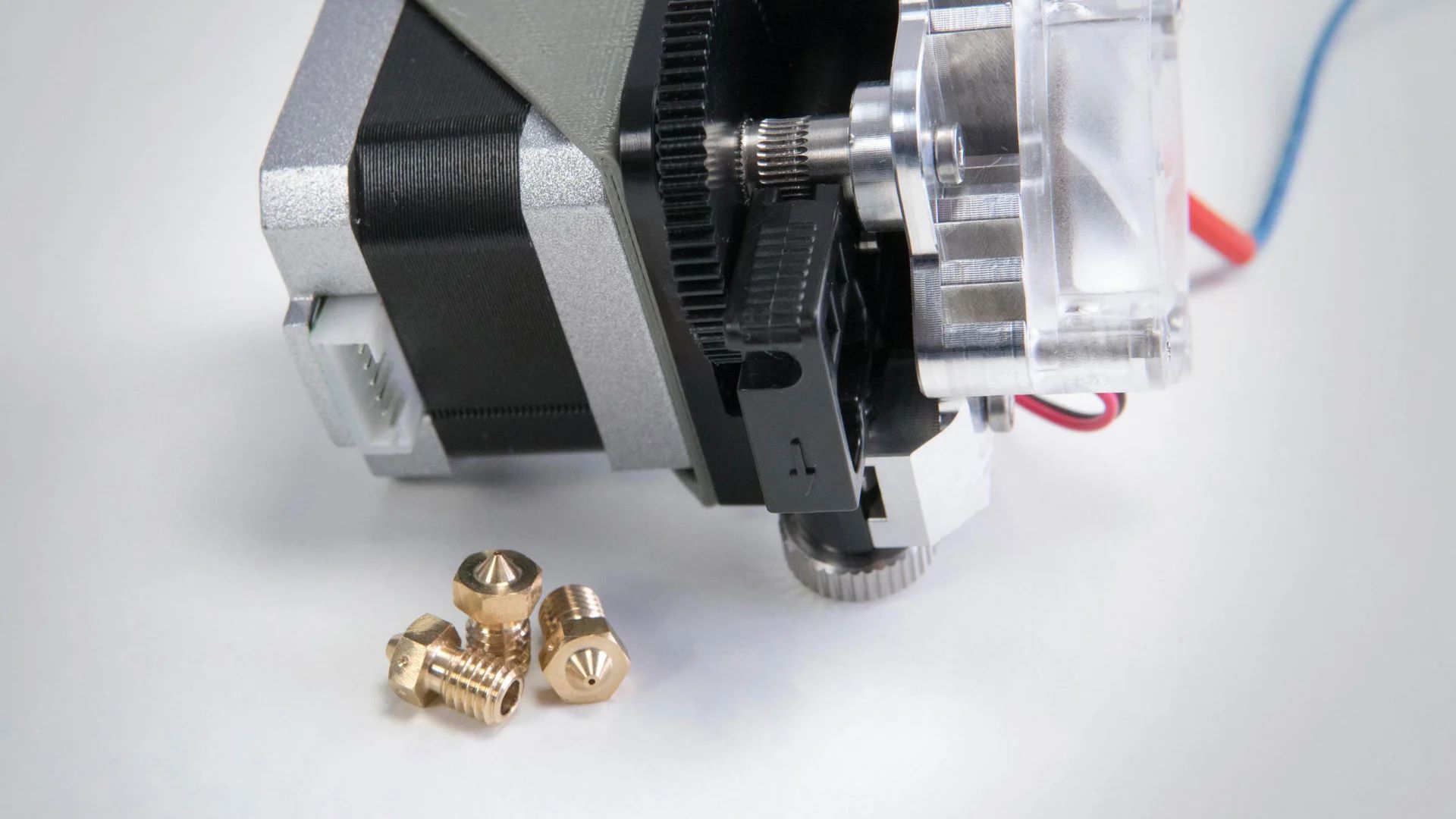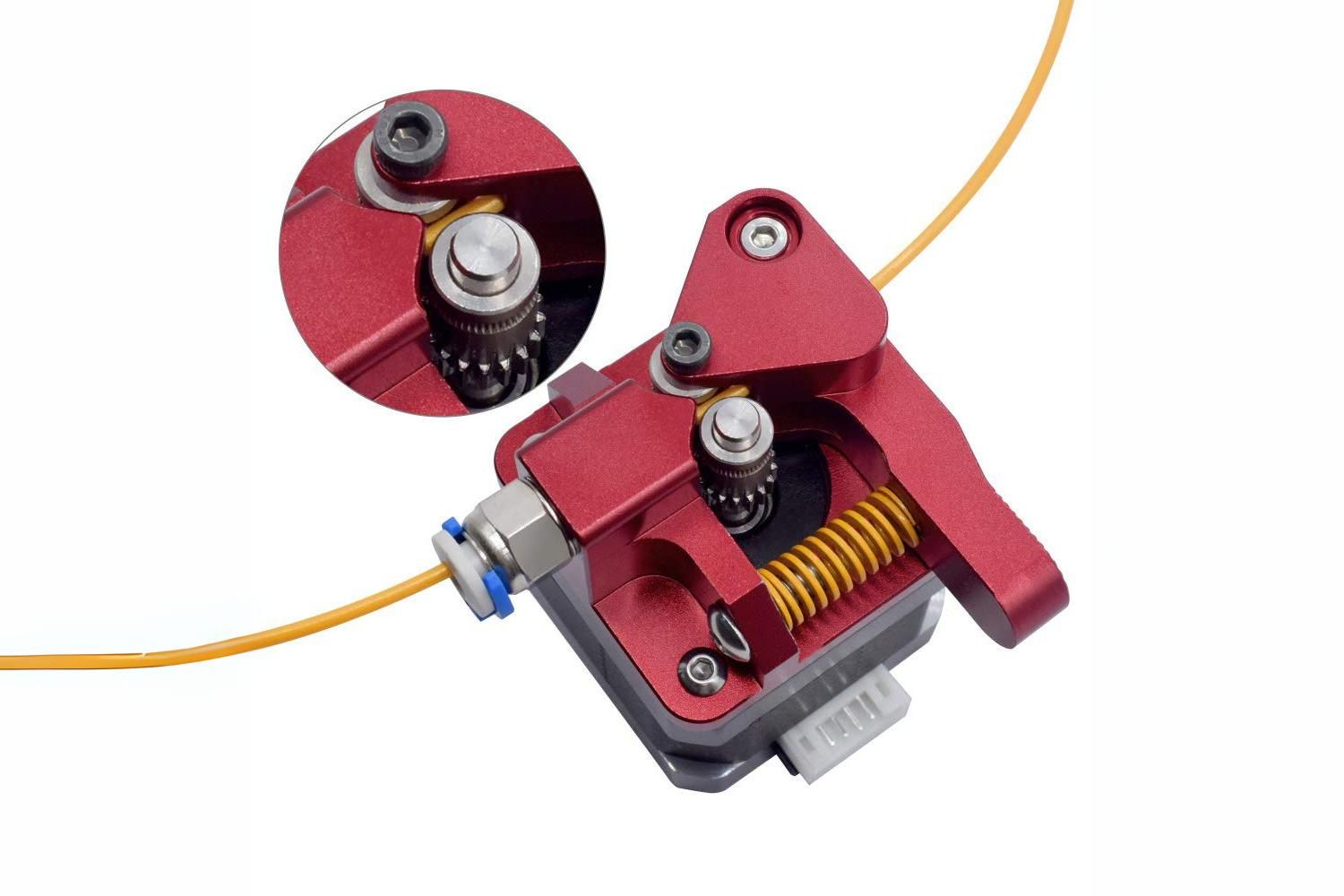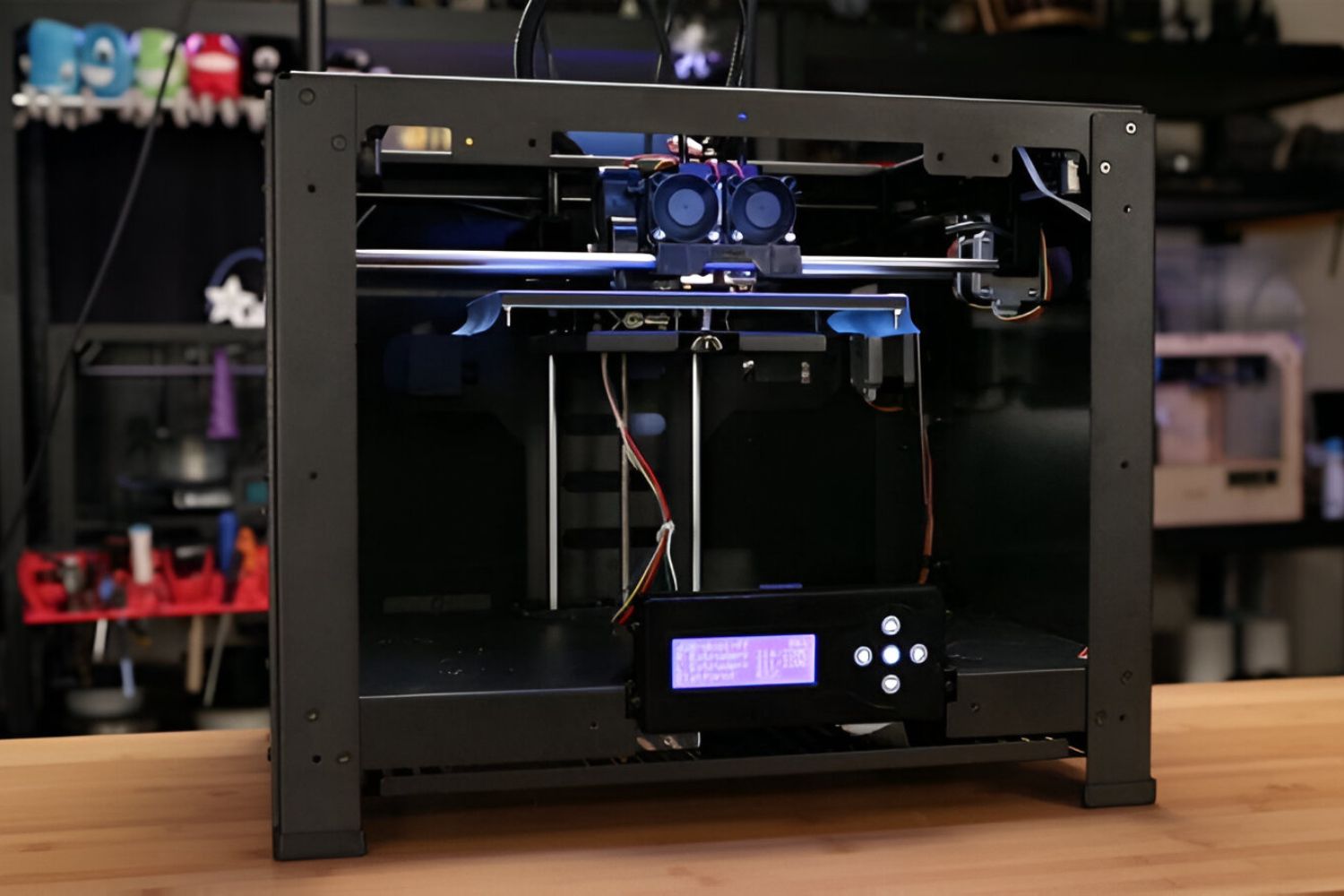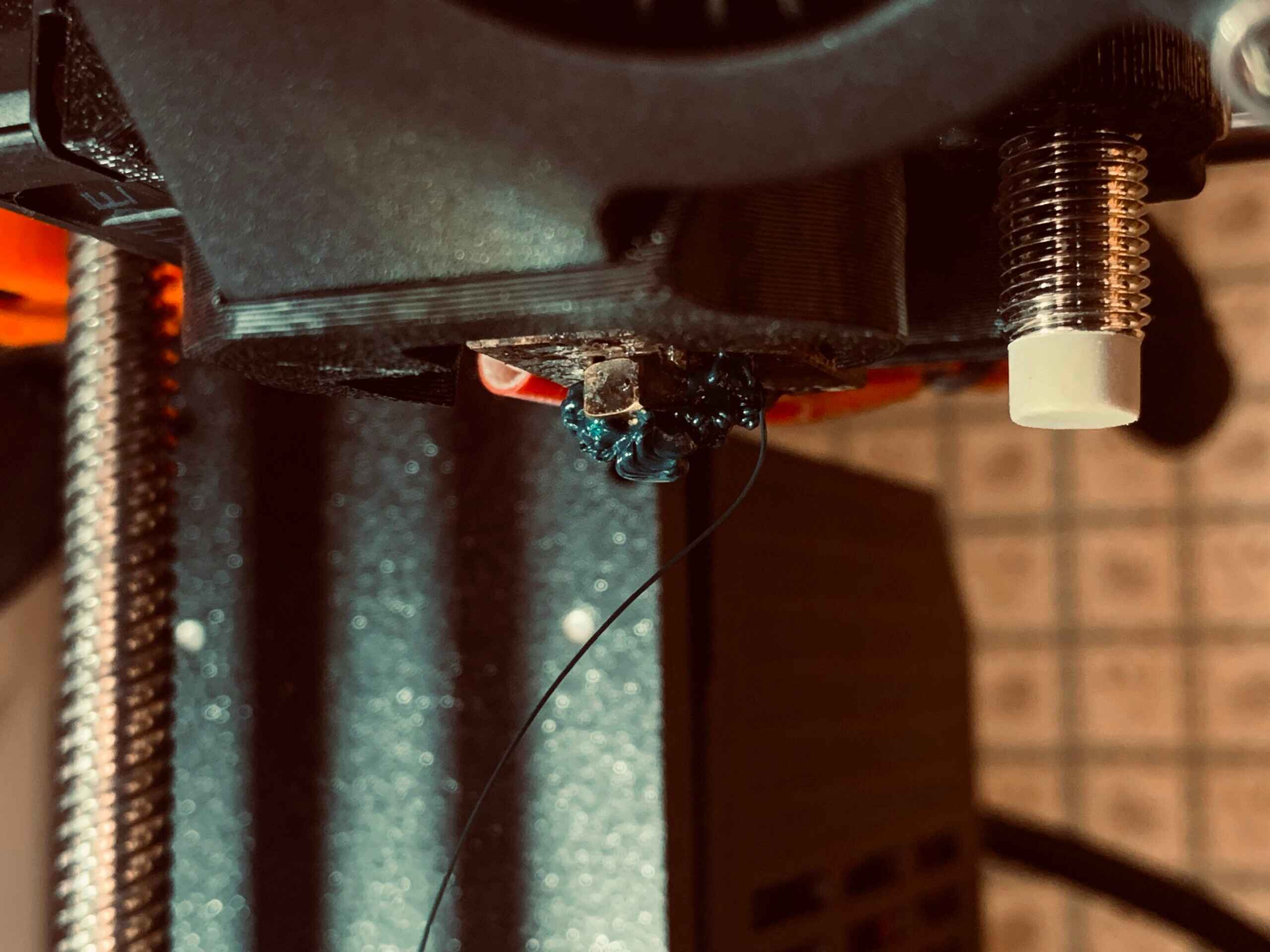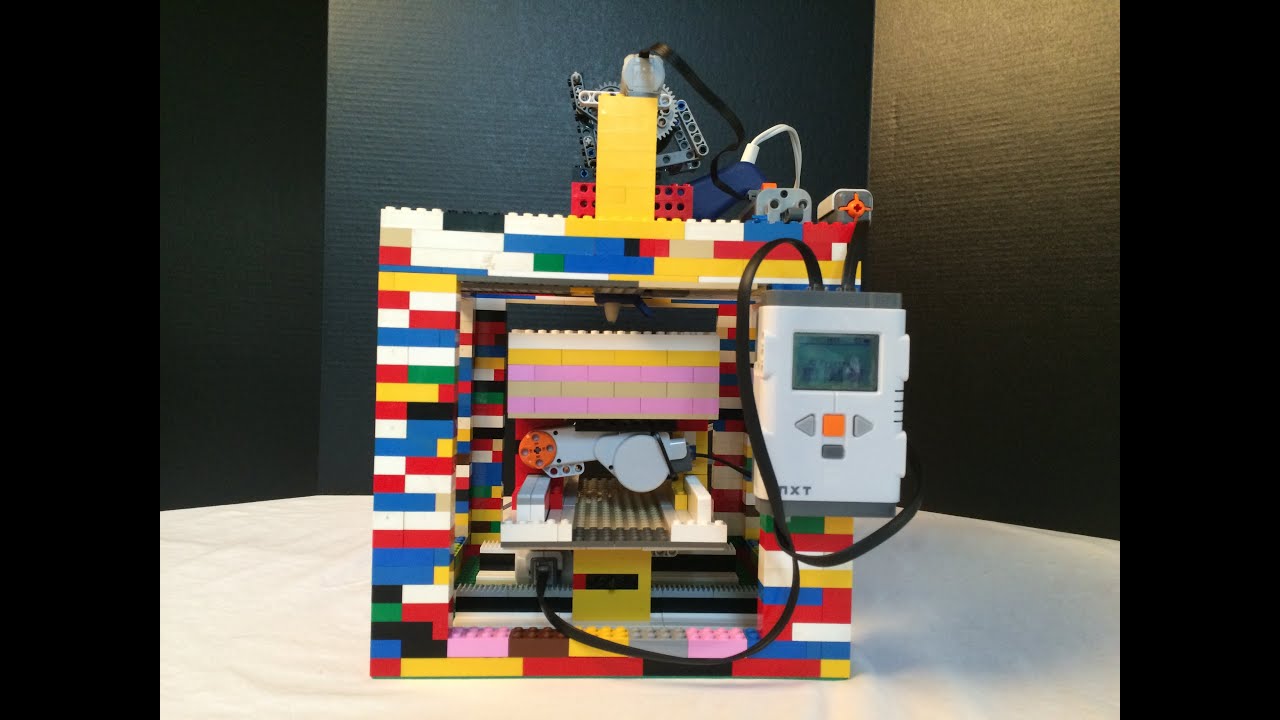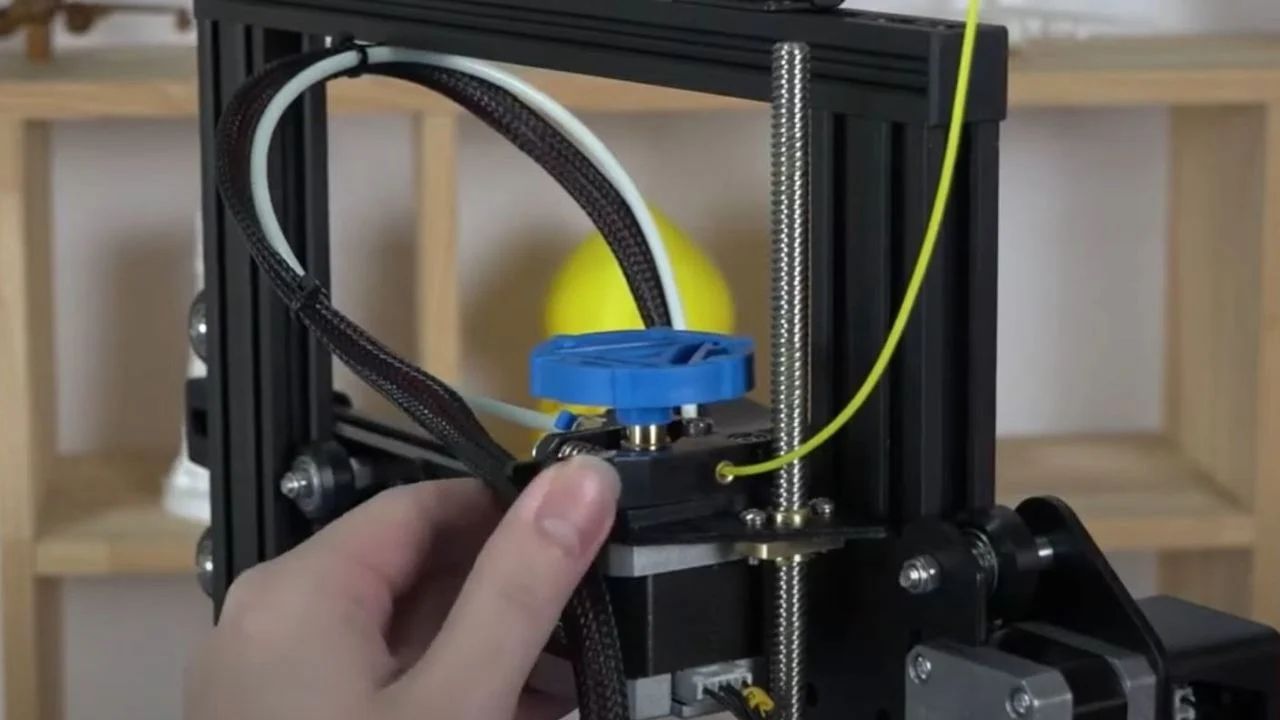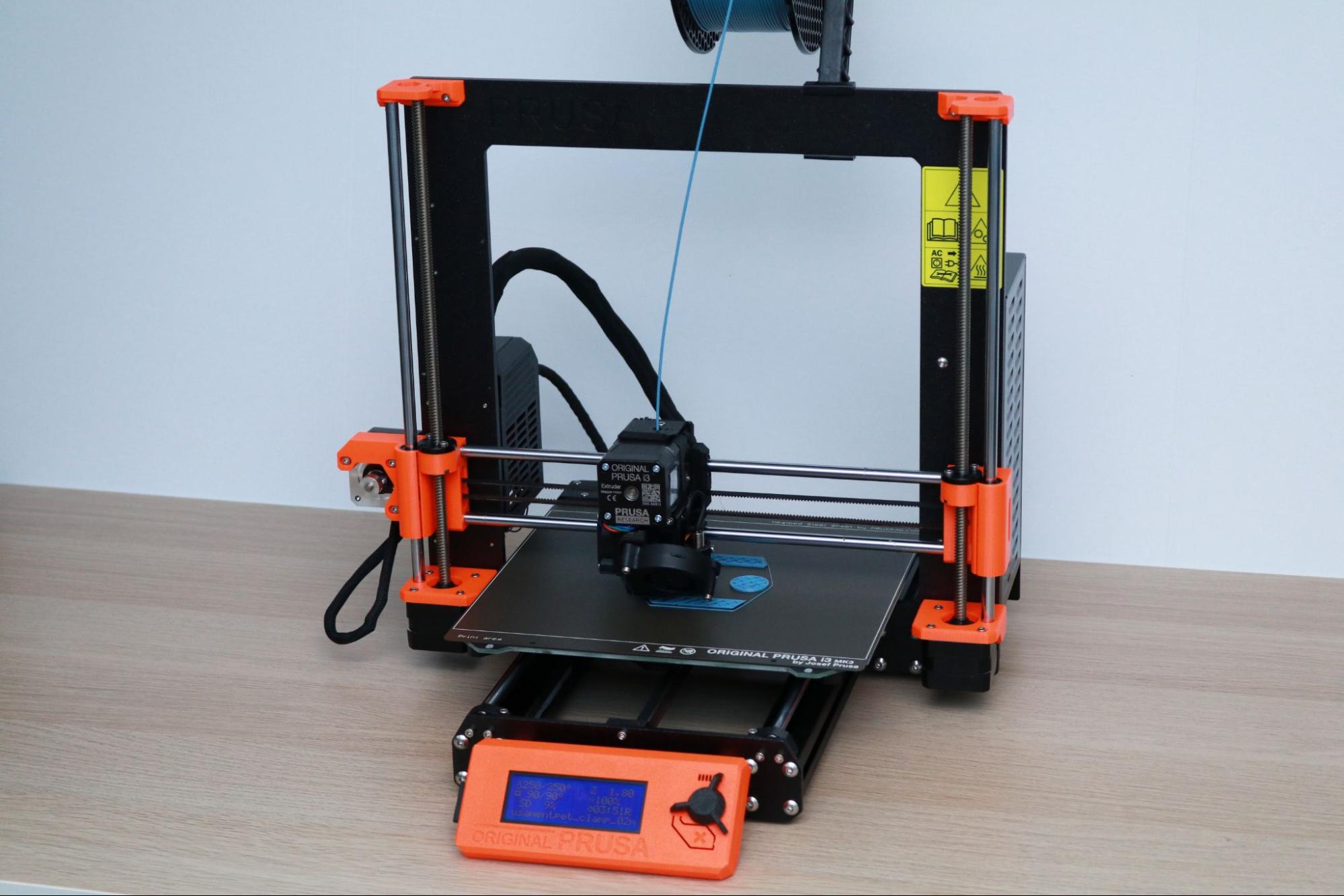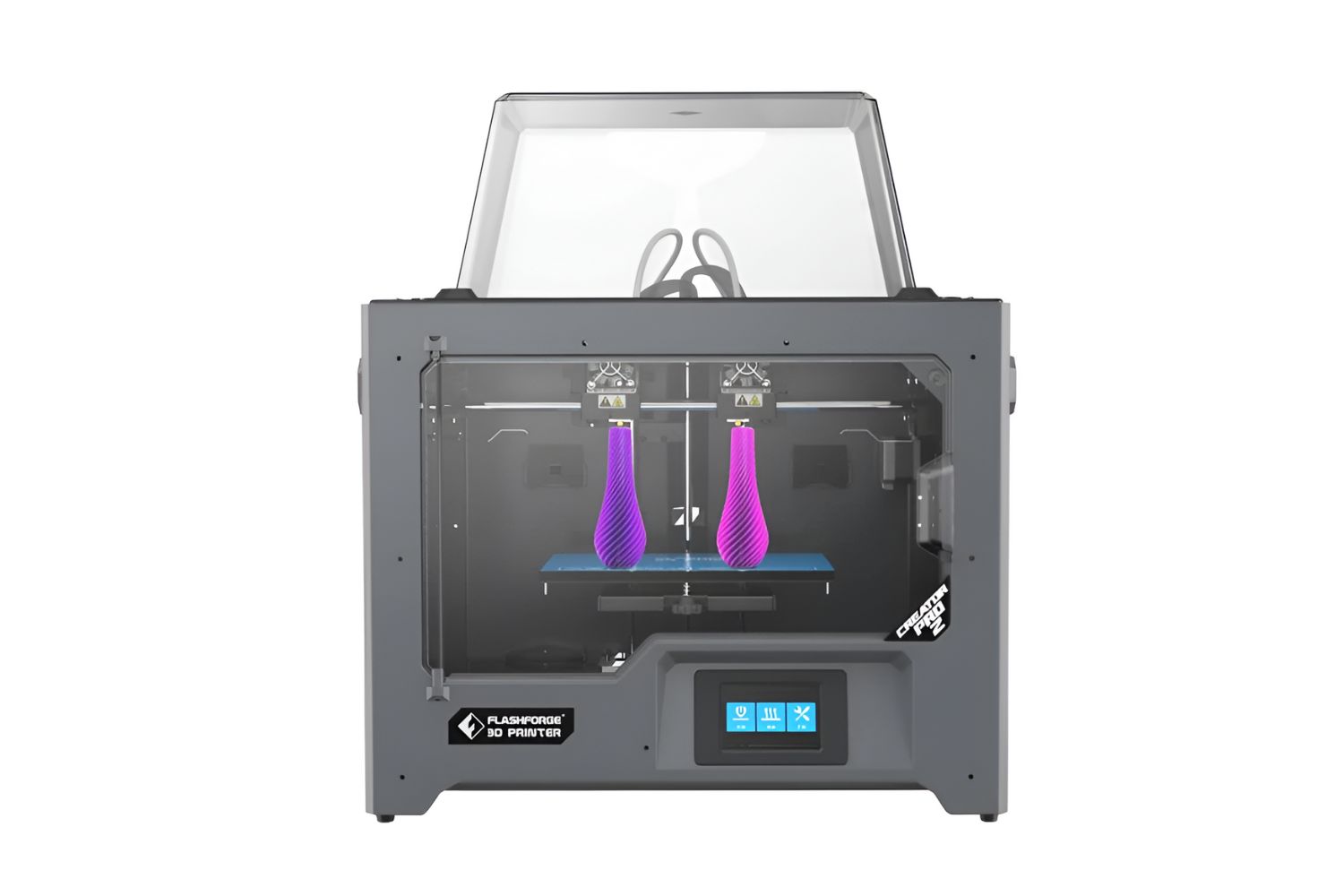Introduction
The world of 3D printing has revolutionized the way we design and manufacture objects. From intricate prototypes to personalized creations, 3D printers have become invaluable tools in various industries. At the core of these cutting-edge devices lies the extruder, which is one of the key components responsible for the successful printing process.
But what exactly is an extruder? How does it function? In this article, we will delve into the world of 3D printer extruders to explore their purpose and components, providing a comprehensive understanding of their role in the printing process.
An extruder is a critical component of a 3D printer that controls the flow and deposition of material, typically filament, during the printing process. It is responsible for melting the filament and precisely depositing it layer by layer onto the build plate. Essentially, it acts as the “hands” of the 3D printer, ensuring that the material is accurately positioned to create the desired object.
Understanding the various components that make up the extruder is essential in comprehending its overall functionality. Let’s take a closer look at the main components that constitute an extruder:
What is an extruder?
An extruder is a vital component of a 3D printer that is responsible for pushing, melting, and depositing filament to create 3D printed objects. It plays a crucial role in the additive manufacturing process by ensuring precise and controlled material deposition.
The extruder consists of several key components that work together to achieve the desired outcome. These components include the hotend, nozzle, filament drive, heat sink, cooling fan, heater cartridge, and thermistor. Each element has a specific function and contributes to the overall performance of the extruder.
The hotend is the uppermost part of the extruder, where the filament is fed into and heated. It typically consists of a heating element and a temperature sensor, such as a thermistor, to control and maintain the desired temperature. The filament drive, also known as the extruder motor or gear, is responsible for gripping and pushing the filament through the system.
The filament is then guided through the nozzle, a small opening at the tip of the hotend. The nozzle determines the size of the extruded material and plays a crucial role in achieving the desired level of detail and precision in the printed object. Different nozzle sizes are available, allowing for customization of the printing process.
To prevent overheating of the hotend, a heat sink is usually attached near the nozzle. This dissipates excess heat and prevents the filament from jamming or degrading due to excessive temperatures. Additionally, a cooling fan is placed near the heat sink to enhance the cooling process and ensure the proper solidification of the extruded material.
The heater cartridge, as the name suggests, is responsible for heating the hotend. It provides the necessary heat to melt the filament, enabling it to flow smoothly through the extruder. The thermistor works hand in hand with the heater cartridge, monitoring and adjusting the temperature to maintain optimal printing conditions.
Overall, the extruder acts as a crucial interface between the 3D printer and the material being printed. Its precision, reliability, and ability to control the flow of filament are essential for the success of any 3D printing project. By understanding the role and components of the extruder, users can optimize their printing processes and achieve high-quality results.
Components of an extruder
The extruder of a 3D printer consists of several key components that work together to ensure the proper melting, deposition, and flow of filament. Understanding these components is vital for optimizing the printing process and achieving excellent print quality.
Let’s take a closer look at the main components of an extruder:
- Hotend: The hotend is the uppermost part of the extruder and is responsible for heating and melting the filament. It typically consists of a heating element and a temperature sensor, such as a thermistor, to regulate the temperature accurately.
- Nozzle: The nozzle is a small opening at the tip of the hotend where the filament is extruded. It determines the diameter of the extruded material, affecting the level of detail and precision in the printed object. Nozzles come in various sizes to accommodate different printing requirements.
- Filament Drive: Also known as the extruder motor or gear, the filament drive is responsible for gripping and pushing the filament through the extruder. It ensures a consistent and controlled flow of material during the printing process.
- Heat Sink: The heat sink is typically located near the nozzle of the hotend. It helps dissipate excess heat to prevent the filament from overheating and jamming. A well-functioning heat sink is essential for maintaining the optimal temperature for successful printing.
- Cooling Fan: To enhance the cooling process and ensure proper solidification of the extruded material, a cooling fan is often placed near the heat sink. It helps maintain the structural integrity of the printed object and prevents unwanted deformations caused by excessive heat.
- Heater Cartridge: The heater cartridge is responsible for providing the necessary heat to melt the filament. It is typically located within the hotend and is controlled by the 3D printer’s heating system. The heater cartridge ensures the filament reaches the appropriate temperature for extrusion.
- Thermistor: Working in conjunction with the heater cartridge, the thermistor is a temperature sensor that monitors and regulates the hotend’s temperature. It ensures the proper heating and melting of the filament, preventing issues such as under- or over-extrusion.
These components form the backbone of the extruder, allowing for precise control over the filament and ensuring consistent and reliable 3D printing. By familiarizing yourself with these components, you can troubleshoot issues, make necessary adjustments, and optimize your printing process for superior results.
Hotend
The hotend is a crucial component of the extruder in a 3D printer. It is responsible for heating and melting the filament before it is extruded through the nozzle. The hotend plays a critical role in determining the quality and accuracy of the printed object.
The hotend typically consists of several key elements, including a heating element and a temperature sensor such as a thermistor. The heating element, often a cartridge heater, is responsible for generating the necessary heat to melt the filament. It is controlled by the 3D printer’s heating system, which maintains a precise temperature to ensure optimal extrusion.
The thermistor, on the other hand, monitors and regulates the temperature of the hotend. It provides feedback to the printer’s control board, allowing for accurate temperature control and preventing overheating or underheating of the filament. The thermistor is crucial in achieving consistent extrusion and avoiding issues like clogs or improper flow.
Within the hotend, there is a small chamber called the melt zone, where the filament is melted. This chamber is precisely engineered to create a controlled heating environment, allowing the filament to reach its melting point without being exposed to excessive heat for an extended period.
The hotend also contains a heat break, also known as a thermal barrier tube or heatsink tube. This component acts as a boundary between the hot melt zone and the cooler part of the extruder. It prevents heat from traveling too far up into the cold end of the extruder, ensuring that the filament remains in a semi-solid state until it reaches the nozzle.
The nozzle, located at the bottom of the hotend, is where the melted filament is extruded. Nozzles come in different sizes, with varying diameters, to accommodate different printing requirements. Smaller nozzle sizes allow for finer details, while larger nozzles enable faster printing but with less intricate precision.
It is crucial to maintain the hotend in good condition to ensure optimal printing results. Regular cleaning and proper maintenance are necessary to prevent clogs and ensure smooth filament flow. Additionally, calibrating and fine-tuning the temperature settings of the hotend can greatly impact the print quality and overall performance of the 3D printer.
The hotend is a vital component of the extruder that directly affects the success of 3D printing. By understanding its role and functionality, users can troubleshoot issues, optimize temperature settings, and achieve high-quality prints with precision and accuracy.
Nozzle
The nozzle is a critical component of the extruder in a 3D printer. It is responsible for determining the size and shape of the filament as it is extruded onto the build plate. The nozzle plays a vital role in achieving the desired level of detail and precision in the printed object.
Nozzles come in various sizes, with diameters ranging from as small as 0.2mm to as large as 1.0mm or more. The choice of nozzle size depends on the specific requirements of the print job. Smaller nozzle sizes allow for finer details, intricate designs, and smoother surfaces, but they may result in longer printing times. On the other hand, larger nozzle sizes allow for faster printing, but with less intricate precision and details.
When selecting a nozzle, it is important to consider the material being used for printing. Different materials have different viscosities and flow characteristics, which can affect the extrusion process. Nozzles with larger diameters are generally better suited for materials that have higher viscosities or contain additives that may clog smaller nozzles.
The nozzle consists of a small opening through which the melted filament is extruded. This opening is crucial for controlling the flow of filament and ensuring that it is deposited onto the build plate precisely. The diameter of the nozzle determines the volume of filament that can be extruded per unit of time, which directly affects the print speed and quality.
A clogged or damaged nozzle can greatly hinder the printing process. Filament residue, debris, or improper maintenance can lead to a blockage that prevents the proper flow of filament. Regular cleaning and maintenance of the nozzle are therefore essential to maintain optimal printing performance.
When changing the nozzle, it is important to select a compatible size that matches the desired printing requirements. Proper installation and alignment of the nozzle are crucial to prevent any leakage or misalignment during the printing process.
Overall, the nozzle is a critical component of the extruder that plays a significant role in the quality, precision, and speed of 3D printing. By selecting the appropriate nozzle size, maintaining regular cleaning and maintenance, and ensuring proper alignment, users can achieve excellent print results with the desired level of accuracy and detail.
Filament Drive
The filament drive, also known as the extruder motor or gear, is a crucial component of the extruder in a 3D printer. It is responsible for gripping and pushing the filament through the system, ensuring a consistent and controlled flow of material during the printing process.
The filament drive operates by applying pressure to the filament, forcing it to move in a controlled manner towards the hotend. It consists of a motor and a gear mechanism that work together to provide the necessary force to propel the filament forward. The motor generates rotational motion, which is translated into linear movement by the gear mechanism.
One of the key functions of the filament drive is to maintain a constant and reliable feed rate of the filament. This is crucial for achieving consistent extrusion and producing high-quality prints. The drive must apply enough pressure to grip the filament securely, preventing slippage or skipping, while avoiding excessive force that could cause the filament to buckle or deform.
The filament drive mechanism is typically adjustable to accommodate different filament diameters. Most printers allow users to adjust the tension or pressure applied by the filament drive to ensure optimal filament grip. This adjustability is particularly useful when using filaments with varying diameters or different material properties.
Some advanced 3D printers also incorporate additional features into the filament drive mechanism. For example, a filament sensor can be integrated to detect if the filament has run out or become tangled. When such conditions are detected, the printer can pause the print job or provide alerts, allowing users to take the necessary actions.
To maintain optimum performance, it is important to regularly clean the filament drive assembly and ensure that there is no debris or filament residue that may impact its functionality. Proper alignment and calibration of the filament drive are also crucial for reliable and accurate filament feeding.
The filament drive is a critical component in the extruder, providing the necessary force and control over the filament during the 3D printing process. By ensuring proper maintenance, calibration, and adjustment, users can achieve consistent, reliable, and high-quality prints with their 3D printers.
Heat Sink
The heat sink is an essential component of the extruder in a 3D printer. It is responsible for dissipating excess heat and maintaining optimal temperatures, ensuring smooth and uninterrupted printing.
The heat sink is typically located near the nozzle, where the filament exits the hotend. Its primary function is to cool the filament rapidly, preventing it from deforming or melting prematurely. By dissipating heat, the heat sink helps maintain the desired temperature range in the printing process and prevents overheating of the filament.
Heat sinks are usually made of metal, which has excellent thermal conductivity properties. This allows the heat sink to absorb and transfer the heat away from the hotend effectively. Additionally, heat sinks often have a large surface area to maximize heat dissipation, ensuring efficient cooling of the filament.
Proper cooling is especially crucial when printing with materials that are prone to heat-related issues, such as low-temperature filaments or those with low melting points. Inadequate cooling can result in print defects, such as stringing or warping, as the filament may remain soft and sag between printed objects.
Another critical factor related to the heat sink is the use of a cooling fan. Positioned near the heat sink, the cooling fan enhances the heat dissipation process by increasing air circulation and cooling efficiency. It helps solidify the extruded filament more quickly, preventing unwanted deformations and ensuring sharp, well-defined printed objects.
It is essential to maintain the heat sink and cooling fan in good working order. Regular cleaning is necessary to remove any accumulated dust or debris that might impede proper cooling. Also, ensure that the cooling fan is functioning correctly and that there are no obstructions that could restrict airflow.
Some 3D printer models may have additional features integrated into the heat sink, such as heat breaks or thermal barriers. These components help create a clear distinction between the hot melt zone and the cooler part of the extruder, preventing heat from traveling too far up and causing filament jams or clogs.
By effectively dissipating heat and maintaining optimal temperatures, the heat sink plays a vital role in the successful operation of a 3D printer extruder. It ensures a stable printing environment, allowing for reliable and consistent extrusion of the filament, resulting in high-quality prints.
Cooling Fan
The cooling fan is an essential component of the extruder in a 3D printer. It plays a crucial role in the printing process by enhancing the cooling of the printed object and ensuring optimal solidification of the extruded filament.
The cooling fan is typically positioned near the heat sink, where the filament exits the hotend. Its primary function is to increase the airflow and cool down the extruded filament rapidly. By blowing cool air onto the printed layers, the cooling fan helps solidify the filament more quickly, preventing unwanted deformations and ensuring sharper, well-defined printed objects.
One of the main benefits of using a cooling fan is the prevention of stringing, which occurs when melted filament remains soft and creates thin strands between different parts of the printed object. The cooling fan cools the filament rapidly, reducing its ability to stretch and minimizing the occurrence of stringing.
In addition to preventing stringing, the cooling fan also reduces the risk of warping or distortion in the printed object. Certain materials, such as ABS, are prone to shrinkage and can warp as they cool down. The cooling fan helps cool the printed layers uniformly, minimizing the internal stresses and reducing the likelihood of warping.
It is important to note that not all prints require the use of a cooling fan. Some materials, such as certain types of filaments with higher printing temperatures or specialty materials, may require different cooling settings or even no cooling at all. It is essential to understand the specific requirements of the material being used and adjust the cooling fan accordingly.
Proper maintenance and control of the cooling fan are crucial for optimal printing results. Ensure that the fan is clean and free from dust or debris that could impede airflow. Also, ensure that the cooling fan is functioning correctly and that there are no obstructions that could restrict airflow.
In advanced 3D printers, the cooling fan may be variable in speed or have multiple fan settings. This allows for adjustments depending on the complexity of the print job and the specific requirements of the material being used. Experimenting with different cooling settings can help optimize print quality and minimize the chances of defects.
The cooling fan is a vital component in 3D printing, particularly in achieving high-quality prints with intricate details. By effectively cooling the printed layers and preventing deformations, the cooling fan helps produce superior results and enhances the overall printing experience.
Heater Cartridge
The heater cartridge is a crucial component of the extruder in a 3D printer. It is responsible for generating the heat required to melt the filament and ensure smooth extrusion for successful 3D printing.
The heater cartridge is typically located within the hotend, the uppermost part of the extruder. It is designed to heat the filament to its melting point, allowing it to flow freely through the system for precise deposition onto the print bed. The accuracy and efficiency of the heater cartridge greatly impact the overall print quality and performance.
Heater cartridges are usually made of high-resistance materials, such as nichrome wire or other heating elements, which can handle the high temperatures required for filament melting. They are specifically selected for their ability to generate heat quickly and reach the desired temperature range efficiently.
Control of the heater cartridge is critical to maintain optimal printing conditions. The temperature of the hotend is typically regulated by a control system in the 3D printer, which takes input from a temperature sensor (such as a thermistor) and adjusts the power supplied to the heater cartridge accordingly. This feedback loop ensures that the hotend remains at the desired temperature for successful extrusion.
It is important to choose a heater cartridge that matches the power requirements and specifications of the 3D printer. Additionally, understanding the temperature characteristics of the filament being used can help determine the appropriate power setting for the heater cartridge and optimize the printing process.
Regular maintenance and inspection of the heater cartridge are essential to ensure its proper functioning. Any sign of wear or damage should be addressed promptly to prevent potential issues, such as inaccurate temperature control or uneven heating. Additionally, keeping the heater cartridge clean and free from debris can improve its efficiency and lifespan.
Furthermore, some advanced 3D printers have the capability to adjust the power supplied to the heater cartridge during the printing process. This feature, known as PID control, allows for more precise regulation of the temperature, resulting in improved print quality and reduced temperature fluctuations.
The heater cartridge is a critical component of the extruder, providing the necessary heat for filament melting and extrusion. By maintaining the cartridge in good condition and ensuring accurate temperature control, users can achieve consistent and high-quality prints with their 3D printers.
Thermistor
The thermistor is a vital component of the extruder in a 3D printer. It is a temperature sensor that plays a crucial role in monitoring and controlling the hotend’s temperature during the printing process. The thermistor ensures accurate temperature regulation, enabling successful filament melting and precise extrusion.
A thermistor measures temperature based on the change in its electrical resistance with temperature. It is typically placed near the hotend, in close proximity to the heating element and the filament. As the hotend heats up, the thermistor detects the temperature change and provides feedback to the 3D printer’s control board.
The information provided by the thermistor allows the control system to adjust the power supplied to the heater cartridge, ensuring that the hotend reaches and maintains the desired temperature. This closed-loop feedback mechanism helps achieve consistent and reliable temperature control for the printing process.
One of the key advantages of using a thermistor is its responsiveness to temperature changes. It can quickly detect any fluctuations or deviations from the target temperature, allowing the control system to make necessary adjustments in real-time. This helps prevent issues like under-extrusion or over-extrusion, which can negatively impact print quality.
Accuracy and calibration are important aspects of thermistor functionality. Calibration ensures that the thermistor’s resistance values correspond accurately to the target temperatures. Proper calibration helps maintain consistent and precise temperature readings, leading to reliable temperature control during the printing process.
Some 3D printers come equipped with firmware that enables the user to fine-tune the temperature readings of the thermistor. This feature allows for even more precise temperature control, catering to specific printing requirements and material characteristics.
Regular maintenance and inspection of the thermistor are important to ensure its accuracy and reliability. Any signs of damage or wear should be addressed promptly to prevent issues such as erratic temperature readings or poor temperature control.
Understanding how the thermistor works and its significance in temperature control is crucial for users to optimize the printing process. By properly maintaining and calibrating the thermistor, users can achieve consistent temperature control, resulting in high-quality prints with accurate filament melting and extrusion.
How does the extruder work?
Understanding how the extruder works is essential to grasp the intricacies of the 3D printing process. The extruder is responsible for smoothly and accurately feeding filament, melting it, and depositing it layer by layer to create a three-dimensional object. Here is a step-by-step breakdown of how the extruder functions:
- Filament Loading: The extruder starts by loading the filament, typically made of thermoplastic materials such as PLA or ABS. The filament is inserted into a filament drive mechanism that grips it securely.
- Feed and Tension: The filament drive mechanism, often consisting of a motor and gears, exerts pressure on the filament and pushes it towards the hotend. This process ensures a constant and controlled flow of filament throughout the printing process.
- Heating: As the filament reaches the hotend, the heater cartridge generates heat, raising the temperature to the desired melting point. The thermistor monitors the temperature and allows for precise control over the hotend’s temperature.
- Melting the Filament: Once at the correct temperature, the filament starts to melt inside the hotend’s melt zone. The melting process turns the solid filament into a viscous liquid that is ready for extrusion.
- Extrusion: With the filament melted, the extruder pushes it through the nozzle. The nozzle determines the size of the extruded material and controls the flow. The extruded filament is precisely deposited onto the build plate or previous layers, forming the desired object layer by layer.
- Layer Deposition: The extruder continues to extrude filament, following the instructions from the 3D printer’s software. The build plate or the previous layers act as a foundation, and the extruder adds successive layers to form the complete object.
- Cooling: As each layer is deposited, a cooling fan, positioned near the heat sink, helps solidify the extruded filament rapidly. The quick cooling prevents deformation and ensures the printed object retains its desired shape and structure.
- Continued Printing: The extruder continues the process of feeding, melting, and extruding filament, repeating the layer deposition until the entire object is printed.
Throughout the printing process, the extruder motor, the heater cartridge, and the cooling system work in harmony to provide precise control over the filament’s flow, melting, and deposition. The coordination of these components ensures the reliable and consistent printing of complex three-dimensional objects.
By understanding the inner workings of the extruder, users can troubleshoot issues, optimize printing settings, and achieve superior print quality with their 3D printers.
Conclusion
The extruder is a fundamental component of a 3D printer, playing a crucial role in the additive manufacturing process. Understanding the various components and how they work together is essential for optimizing the printing process and achieving high-quality results.
We explored the key components of an extruder, including the hotend, nozzle, filament drive, heat sink, cooling fan, heater cartridge, and thermistor. Each component has a specific function and contributes to the overall performance of the extruder. The hotend heats and melts the filament, while the nozzle controls the extrusion size. The filament drive ensures consistent filament feeding, and the heat sink and cooling fan regulate temperature and prevent deformations. The heater cartridge provides the necessary heat, and the thermistor monitors and regulates the hotend’s temperature.
By maintaining these components in good condition, users can optimize their 3D printing experience. Regular cleaning, calibration, and proper adjustment of settings are necessary to achieve the desired print quality and accuracy. Additionally, understanding the specific requirements of the printing material and making informed choices for nozzle size and cooling settings can further enhance results.
The extruder’s ability to control the flow, melting, and deposition of filament layer by layer allows for the creation of intricate and complex objects. With a precise and well-maintained extruder, users can achieve high-quality prints with fine details and smooth surfaces.
In conclusion, the extruder is the heart of a 3D printer, transforming digital designs into tangible objects. By understanding its components and their functionalities, users can harness the power of the extruder to unlock the full potential of their 3D printing endeavors.







